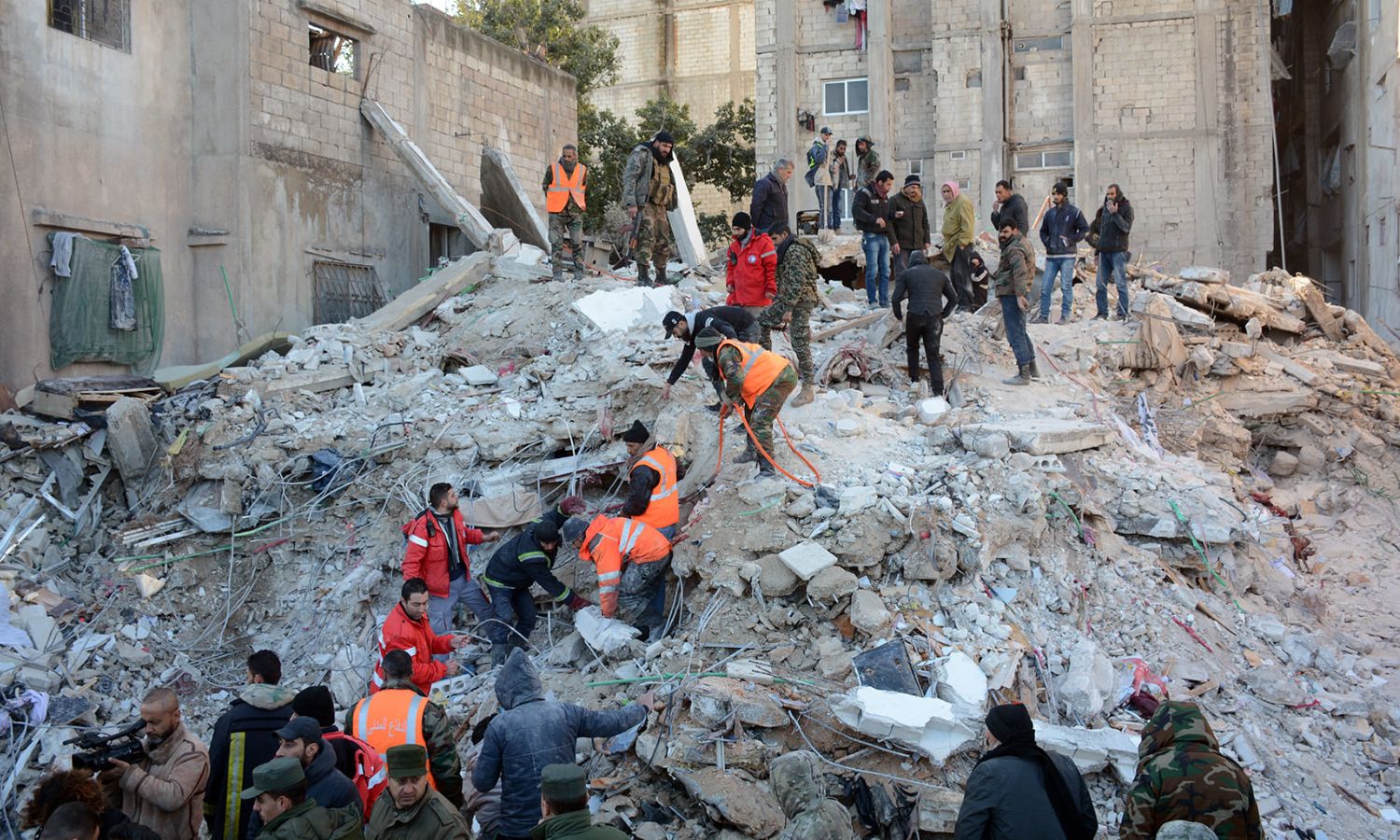



Latakia – Linda Ali
Firas, 47, struggles to gather enough money to pay the rent for his house and meet the increased expenses since he lost his home in the February 6 earthquake. He has little hope of receiving compensation for his significant loss.
After the disaster, Firas and his family, consisting of his wife and three young children, managed to receive assistance from a charity organization. They were provided with a house in al-Thawra Street in Latakia, and the rent was paid for six months. During this time, it was expected that the authorities would secure alternative housing, but they failed to do so.
The lease expired three months ago, and since then, Firas has been paying 350,000 Syrian pounds per month from his own pocket, while his government salary does not exceed 225,000 pounds. He and his wife work extra jobs to ensure the minimum needs of their family.
Regarding the aid received as earthquake victims, Firas mentioned that at the beginning of the disaster, he received a food basket from the Syrian Trading Company, two baskets from Al-Areen humanitarian foundation, and two baskets from the Syrian Red Crescent (Emirati basket).
He added that when he went to receive aid from the Red Crescent last September, he was told that he had already received it twice and was not eligible for a third basket.
Firas acknowledges receiving several other food baskets from private associations or civil groups formed by activists to support the earthquake victims. He also received a money transfer of 3,150,000 pounds through Al-Fouad money transfer company. Many affected individuals received this sum, which was provided by the National Fund for Supporting Earthquake Victims.
The man in his forties describes his situation and the situation of his relatives who lost their homes in the earthquake as being forgotten, which is what they expected.
After the earthquake, many charity organizations and the local community worked on securing homes and paying their rents for the affected people for periods ranging from six months to a whole year. However, as the six-month period ended, some of them are still unaware of the magnitude of the disaster waiting for them after the year passes and the free lease contracts expire. They will then have to pay increased rent, as is usually the case.
Hassan, 32, had no choice after his house collapsed but to return with his family, consisting of his wife and twin children, to his parents’ home, where they live with his unmarried brother. They were able to secure a small room there, and since then, the family has been counting the days until they can obtain alternative housing and move out.
There is no hope on the horizon, as so far, only one batch of affected people received alternative housing at the al-Naq’a site in Jableh city, consisting of 47 units, back in August. At that time, the head of the Latakia Provincial Council, Taiseer Habib, stated that the names of the affected individuals would be gradually announced, and the Local Operations Room would assess them according to specific criteria.
He mentioned the existence of compensation for those whose houses were demolished or in need of reinforcement, but he did not clarify anything about the amount of compensation or its approximate release date.
The UAE announced that it would provide 1,000 prefabricated housing units for the earthquake victims in Syria. The delay in their installation indicates clear corruption and neglect by those responsible for managing the disaster.
During the past November, Bashar Assad, the head of the Relief Operations Room in Latakia, stated to the local Al-Wahda newspaper (published in Latakia) that the prefabricated housing units are distributed in seven sites. The first site is located in the al-Naq’a neighborhood in Jableh city and consists of 47 housing units that were delivered to the affected individuals.
There is also the Fawwar site, which includes 123 housing units with a completion rate of 50%, and the Fayd site, with 58 housing units and a completion rate of 70%. Additionally, there is the Ghraaf site, which includes 350 housing units with a completion rate of 58%, along with the Damsarcho site that includes 205 housing units with a completion rate of 46%. Lastly, there is the Astamu site with 58 housing units and a completion rate of 57%.
If, under the best circumstances, the completion rates did not exceed 70% after ten months, it seems unlikely that they will be completed altogether before the first anniversary of the disaster.
Following the earthquake, the number of affected individuals in Latakia exceeded 142,000. The governorate recorded 805 deaths and 1,131 injuries. The number of completely destroyed buildings reached 967, in addition to 3,833 buildings in need of reinforcement and restoration.
if you think the article contain wrong information or you have additional details Send Correction